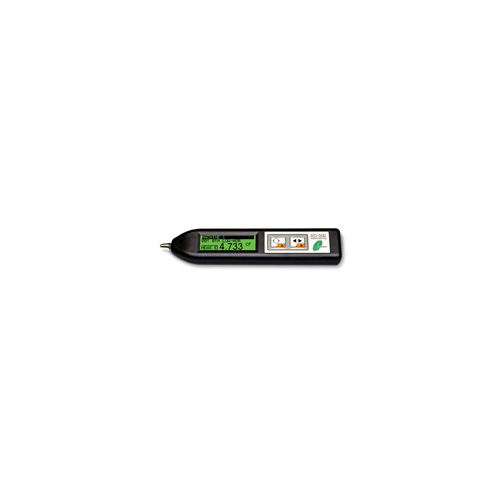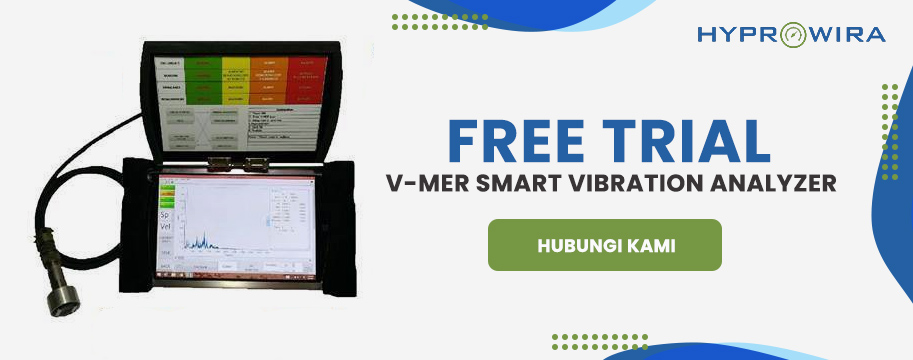In an industry, machinery is an important component to ensure the sustainability of the industry. Especially when talking about factory machines which are very numerous, plus a large size. To be able to get good results, excellent machine condition is also a key to the success of the industrial world. With these conditions, maintenance needs to be done to check every part of each machine on a regular basis.
Surely there must be many things that must be checked first periodically. One way is to check the vibration level of each of these. When the engine is turned on and used, there must be a vibration generated. The vibration of the machine was counted as a natural thing. But if the vibration is too big, then the vibration of the engine also affects the performance of the machine that is being used.
To be able to measure the vibrations of the machine, the most frequent and effective way to do this is to use a tool. The instrument used to measure the vibration of the machine is called a vibration meter. Maybe many do not know what is meant by a vibration meter. From its function, the parts in the vibration meter, to how to use it. For those who want to know about the ins and outs of vibration, here is an explanation of vibration meters that you can see below.
What is a Vibration Meter?
A vibration meter is basically a measuring device that is specifically designed to measure the vibration of a particular object. The object, for example, is vibration on a pump, motor vibration and vibration on a machine both small, medium and heavy. Using it is very easy, you can simply attach a vibration sensor or magnetic base to the object that will be measured by how much the vibration.
Later, a number of data will appear on the measuring screen. The number or value data shown by the vibration meter is the strength of the vibration produced by an object. These measurement results are then used as a basic benchmark in performing actions and vibration settings that are in accordance with the specified threshold.
Not only that, the use of proper vibration meter parts can have other functions for industry players. For example, is to detect vibrations at certain levels. Vibrations that are too strong or abnormal vibrations can cause a machine to damage both the inside and the outside. So that the engine damage resulting in further losses can be minimized properly using this vibration meter.
The use of vibration meters is one thing that is very important in being the condition of the machine used to stay fit and remain able to be used optimally. With an explanation of what the vibration meter above is, you must have gotten an idea of ??the vibration meter. But as a crucial tool in the industry that uses many machines with medium to large size, of course, there are various kinds of parts that are in the vibration meter. What are the parts of the vibration meter that you can know about?
Vibration Meter Parts
After knowing about what is a vibration meter with a long explanation above, now it's time to discuss the parts of the vibration meter. In use, the vibration meter parts are broadly divided into two parts. The two parts include a vibration sensor and dynamic signal analyzer. Both play an important role in the vibration meter when measuring the vibration of a particular object. Following is an explanation of the vibration meter parts.
Vibration Sensor
As the name implies, vibration sensors have indeed become an important part of vibration meters. The context of its function is to become a tool to convert large physical vibration signals into analog signals. From there you will also see the amount of electricity and the shape of the existing voltage. The way to see how the function of the vibration sensor section is calculated is easy. The trick is you just have to put this part in a machine that you want to measure. Just waiting for some time, then the results will come out soon.
Dynamic Signal Analyzer
Besides the vibration sensor, there is also another part of the vibration meter, the dynamic signal analyzer. A dynamic signal analyzer becomes an important part because it becomes a continuing effort after the vibration sensor is used. After the vibration sensor is placed in the part of the machine where the vibration is to be checked, the results will be obtained in the form of a vibration signal.
From this vibration signal, it will immediately be channeled to the dynamic signal analyzer. Indeed, as an important part of the vibration meter, the dynamic signal analyzer has a fairly complex combination of a machine's vibration source signal. From the results generated by the dynamic signal analyzer, it will be seen how much the amount of vibration in the object with the form of digital data.
How it Works Vibration Meter
Besides having vibration meter parts that are useful for checking the vibration of objects used such as factory machinery, vibration meters also have an easy and simple way of working. Yes, although impressed as a complicated tool, actually using a vibration meter is not difficult. With this condition, you do not need to feel difficult to use a vibration meter every time you want to check the industrial machinery used. This is how the vibration meter works that you need to know and do while you are using it.
The workings of the first vibration meter are to check the vibration meter first well. Pay attention to every detail of this tool. Do not get damaged or not functioning. The part that must be checked in more detail is the vibration sensor because, without the function of the vibration sensor, the vibration meter cannot be used optimally. In addition to the vibration sensor section, sensor cable and power button (ON / OFF), it is also mandatory to check in detail.
In addition to these parts, you also need other supporting components to be able to take vibration measurements correctly, such as battery components and display parts such as LCDs. If you have checked all components of the vibration meter, now is the time for you to turn on this tool. The way is easy. You just have to press the ON / OFF button there. This is why it is necessary to check the battery component parts. With a good battery, the vibration meter can be used optimally.
After the vibration meter has turned on, it is time to take vibration measurements. The trick is to attach an existing vibration sensor to the part of the machine to be measured. From this vibration sensor, data will be sent to the dynamic signal analyzer section. From this dynamic signal analyzer, you will see vibration numbers on the LCD screen display.
To be able to get good and precise data measurements, you should be able to make sure the vibration levels in the machine are working like the mode or value that often appears. Then take the average value (median) of the vibration values ??produced by the machine. Thus, you can get the right final results and in accordance with existing measurements.
Three Basic Vibration Measurements with Vibration Meters
In the measurement of vibration with a vibration meter, there are three basics that are usually used, namely Displacement, Velocity, and Acceleration To be able to get the maximum measurement results, these three bases are indeed needed. For those who don't know about these three fundamentals, here is an explanation of each of the bases used:
Displacement
Displacement is a measure of the amount of motion that is in the mass of an object. The object referred to here is an object whose motion is affected by vibrations. Displacement becomes a change in the place or position of the object, can go forward or backward. The magnitude of the force of displacement is usually influenced by the amplitude produced by vibration. That way, the higher the amplitude, the higher the vibration produced by the machine. Vice versa.
Velocity
Next is velocity. For those who don't know about velocity, the short explanation is the speed of vibration. Yes, velocity is the amount of time needed when displacement occurs. As one of the basic measurements of vibration using a vibration meter, velocity can be called the best indicator to determine whether there are vibration problems that occur. Vibration problems that occur include unbalance, mechanical looseness, misalignment, to damage to the bearings used in the machine. Velocity looks at the size of the velocity of the object when it is moving or vibrating during isolation.
Acceleration
The basis for measuring vibration with the last vibration meter is acceleration. From the name itself, actually already seen what is calculated by acceleration. Yes, acceleration in the practice of vibration measurement is useful for calculating the acceleration of existing vibrations. With this, acceleration is useful when velocity appears. But to use the basis for measuring vibration through acceleration, not all types of machines can be measured using this.
Usually, to use acceleration measurements, the most appropriate type of machine is the rotating machines, or commonly called rotating equipment. The resulting analysis of acceleration is very important for a spinning machine. Usually, with acceleration, the damage will be detected which usually appears in the bearing to the gearbox that has a high speed. Detection of problems from acceleration can also be seen faster and earlier.
That's a long review of vibration meters or vibration meters commonly used in industrial machinery. Starting from understanding the vibration meter, parts of the vibration meter, how the vibration meter works, up to three basic vibration meter measurements. As a very important object for measuring industrial machinery, business people who use industrial machines from medium to large sizes, with hours of use every day need to know about the ins and outs of vibration meters. Hopefully, the information above about vibration meters are useful and add to your insight.






